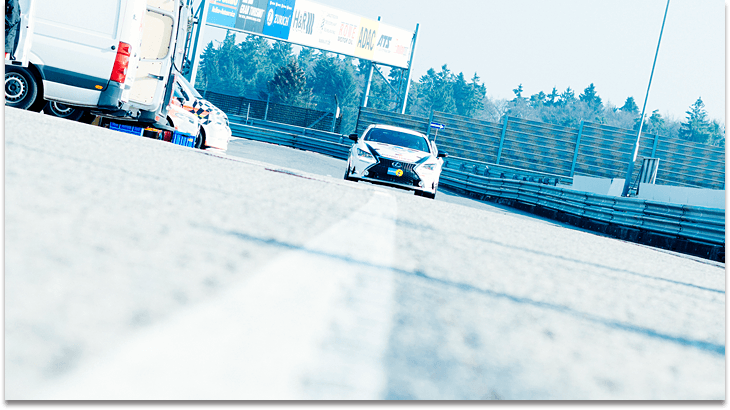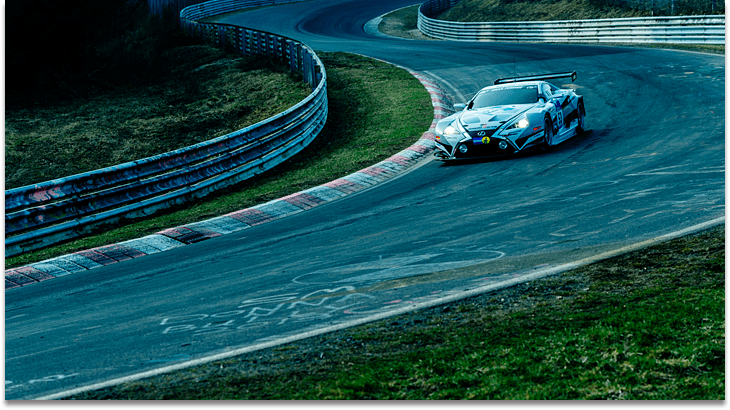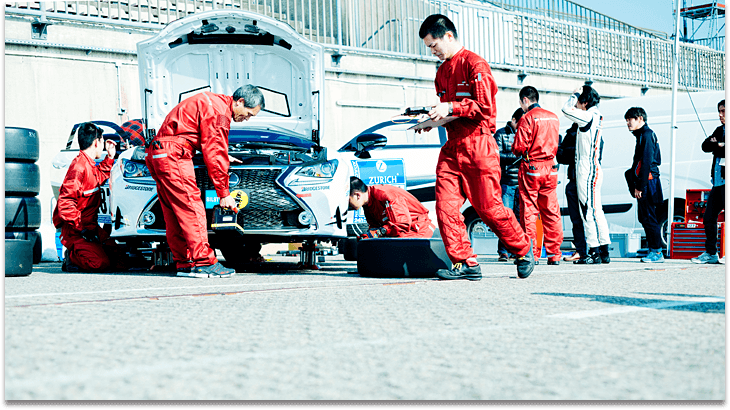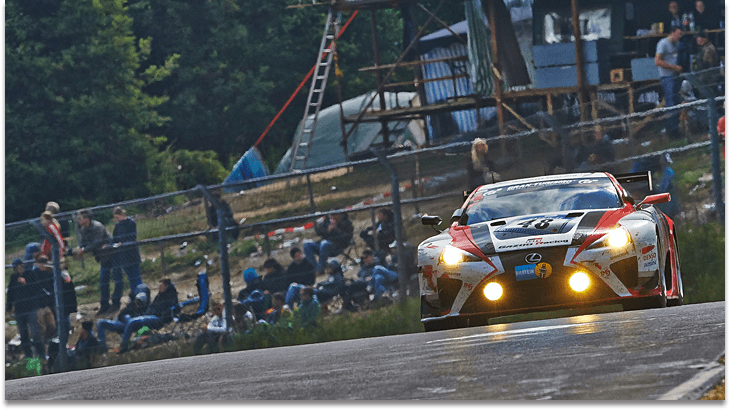
Despite staying close to a mass-production model, yearly evolutions and improvements helped the LFA to raise its performance close to that of FIA-GT3 machines. However, while last year’s machine had speed, an issue remained with its driving ease. Therefore, the 2014 model was developed with the goal of optimizing the balance between speed and ease of driving. The drivers gave their seal of approval, saying, “The speed is now vastly improved, but the balance with ease of driving remains close to that of the 2012 model, which won class championship.” This was precisely the model that could be considered the ultimate fulfillment of the LFA. Morizo entered the race as a driver again this year as he had the year before.
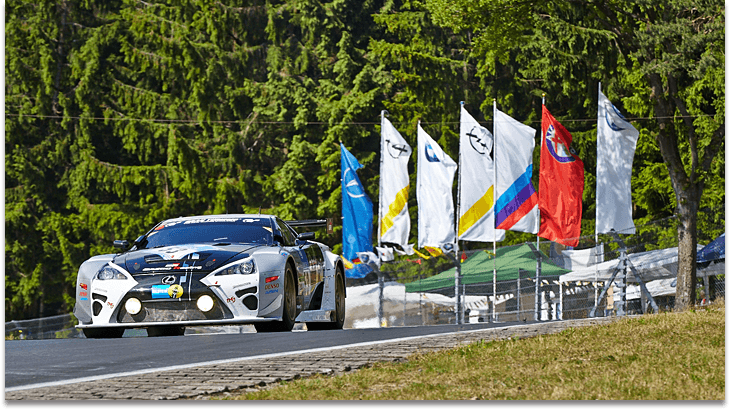
We also took on a new challenge this year. The LFA Code X model was entered in the SP-PRO class race, positioned as an experimental vehicle for developing future sports cars. While the LFA Code X had the same exterior shape as the LFA, internally it used a full-carbon frame, a push-rod suspension, a V10 engine changed to 5.3 liters, and a twin clutch transmission, etc. As was the case with the LFA, the LFA Code X signified a challenge to develop next-generation technologies. This was a model that challenged our engineers to go as far as possible to achieve what could not be achieved during LFA development, applying the technologies currently possessed by Toyota and Lexus engineers. Drivers said, “The LFA Code X has great potential, but its true power is still unknown. It is a machine that will be nurtured and refined in the future.”
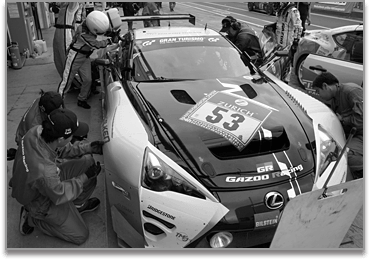 In the preliminary round, the LFA entered the Top 30 Qualifying Session, placing 27th overall (1st in the SP8 class) with a time nearly 4 seconds better than in the previous year’s preliminary. In its first race, the LFA Code X placed 31st overall (2nd in the SP-PRO class). Although the finals got off to a rocky start with numerous crashes, both the LFA and LFA Code X kept driving stably lap after lap. Both cars drove through the final stint with no incident, crossing the finish line safely. The LFA placed 13th overall, winning the SP8 class championship, while the LFA Code X placed 11th overall, winning the SP-PRO class championship. Meanwhile, the Toyota 86, which had entered the SP3 class placed 54th overall, winning the SP3 class championship. This was the first time GAZOO Racing conquered three classes.
In the preliminary round, the LFA entered the Top 30 Qualifying Session, placing 27th overall (1st in the SP8 class) with a time nearly 4 seconds better than in the previous year’s preliminary. In its first race, the LFA Code X placed 31st overall (2nd in the SP-PRO class). Although the finals got off to a rocky start with numerous crashes, both the LFA and LFA Code X kept driving stably lap after lap. Both cars drove through the final stint with no incident, crossing the finish line safely. The LFA placed 13th overall, winning the SP8 class championship, while the LFA Code X placed 11th overall, winning the SP-PRO class championship. Meanwhile, the Toyota 86, which had entered the SP3 class placed 54th overall, winning the SP3 class championship. This was the first time GAZOO Racing conquered three classes.
The LFA did even better than the best overall ranking and most number of laps it had achieved in 2012. This was surely the result of the various types of evolution and maturation that had been continuously accumulated since 2008. Additionally, while the just-created LFA Code X encountered a variety of issues that would have to be resolved, the promise of its potential was also verified.


